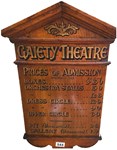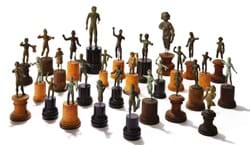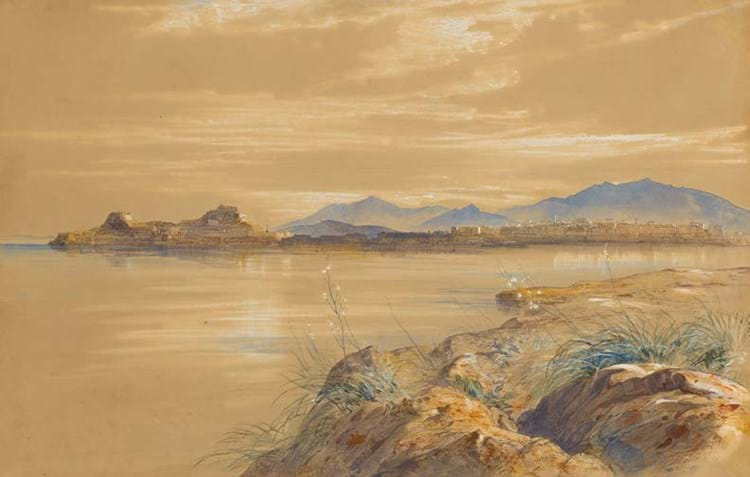
Though he is best known today for limericks and sending the owl and the pussy cat to sea in a beautiful pea green boat, Edward Lear (1812-88) was an artist by trade.
It was not until the Royal Academy held a major show of his work in 1985 that his achievements with the paintbrush were brought to the attention of the general public.
Since then, exhibitions have been held at the Ashmolean Museum and on the island of Corfu (where he later lived), while the first major biography on Lear as an artist was published in 2017.
Now, the first selling exhibition dedicated to Lear’s pictures for at least 30 years is under way at St James’s gallery Guy Peppiatt Fine Art. The online-only show, which runs until April 9, includes more than 30 drawings and watercolours covering his artistic career.
“Lear’s paintings and drawings have over the years become better known,” says the gallery’s Guy Peppiatt, although he admits to being surprised by the lack of recent exhibitions on his work.
“His distinctive style, which evolved out of his desire to rapidly capture the myriad subjects before him, and his dynamic use of colour in both oil and watercolour are a visual reflection of the man, his insatiable curiosity and his individuality.”
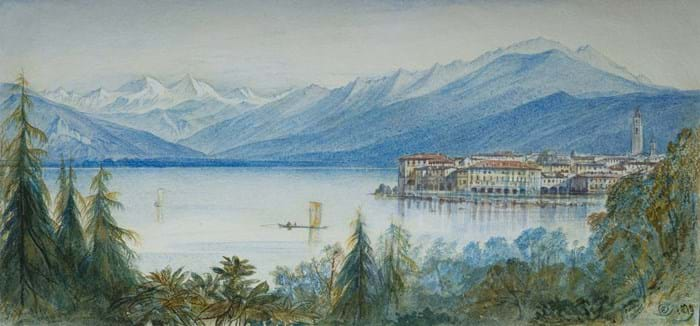
'Pallanza, Lago Maggiore', a 7 x 15in (18 x 38cm) watercolour – £24,000 from the Edward Lear exhibition at Guy Peppiatt Fine Art.
Born survivor
Lear was born into a middle-class family in north London, the penultimate of 21 children and the youngest to survive. He suffered ill health, including epilepsy, and at the age of four was sent to live with his elder sister Ann, who encouraged his natural talent for drawing and painting.
Lear was already drawing “for bread and cheese” by the time he was 16 and soon developed into a serious ornithological draughtsman. He was employed by the Zoological Society and then in the early 1830s by the Earl of Derby, who had a private menagerie.
His first publication, Illustrations of the Family of Psittacidae, or Parrots (1830) was published when he was 19. It was favourably compared to the works by renowned
American ornithologist John James Audubon and has prompted David Attenborough, a collector of Lear’s work, to describe him as “probably the best ornithological illustrator that ever was”.
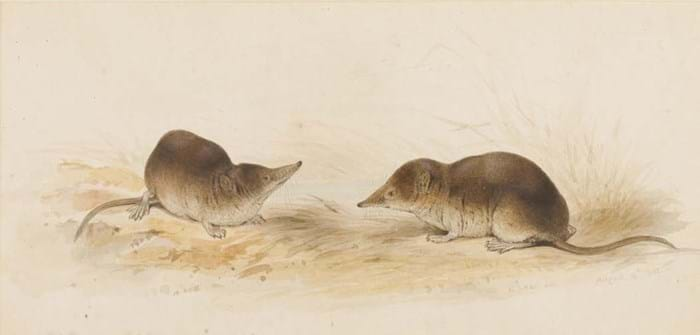
'Study of two Water Shrews', a 4½ x 10in (11 x 24cm) watercolour – £8500 from the Edward Lear exhibition at Guy Peppiatt Fine Art.
This early period is represented in the exhibition by a watercolour of two water shrews drawn when Lear was 20, probably executed at the Zoological Society Gardens in Regent’s Park (which later evolved into London Zoo). The shrews may have originally belonged to the artist’s patron, Thomas Bell (1792-1880), who was a professor of zoology at King’s College in London.
Also included are two of his famous limerick drawings, the earliest of which date from his time entertaining children at Knowsley Hall while he was under the patronage of the Earl of Derby. Published in the Book of Nonsense, it is inscribed with the limerick: There was an old lady whose folly/Induced her to sit upon holly;/Whereupon, by a thorn/Her dress being torn,/She quickly became melancholy.
At the age of 25, failing eyesight caused Lear to give up his detailed ornithological work, and in 1837, he set off for Rome.
Apart from a period in the early 1850s, he would never again live in England. For the next 50 years, he travelled all over the world supporting himself through his drawings, watercolours and writings.
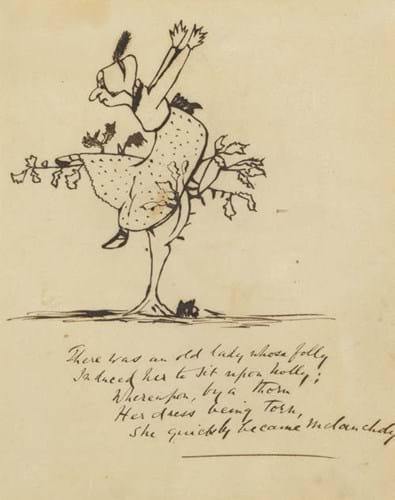
'There was an old Lady whose Folly Induced her to sit upon Holly', 9 x 7in (23 x 18cm), pen and brown ink – £12,500 from the Edward Lear exhibition at Guy Peppiatt Fine Art.
Lear landscapes
Today, Lear’s landscapes are rated highly on the secondary market. Prices range from high six-figure sums for his best oils (Christie’s set an auction record for the artist when it sold an Egyptian view for £820,000) to four and three-figure sums for finished watercolours he completed in the studio and on-the-spot sketches.
The exhibition contains a few of Lear’s early landscape drawings such as two views of Koblenz and Geneva drawn on his way to Rome in 1837 and a finished drawing of nearby Tivoli from 1841.
Lear’s early drawings are distinguished by the use of pencil heightened with white bodycolour in the manner of the popular Victorian drawing master James Duffield Harding.
Views drawn on Corfu where Lear lived from 1850-64 include a large finished watercolour he worked up in his studio of Corfu Town and Agioi Deka, the island’s second-largest mountain.
A number of late Italian works show views drawn at Monte Generoso and Lago Maggiore, not far from Lear’s home at San Remo where he lived from 1870 until his death.
Drawings from his trips to Egypt, Malta, Jerusalem and the Holy Land, and Corsica also feature in the show


